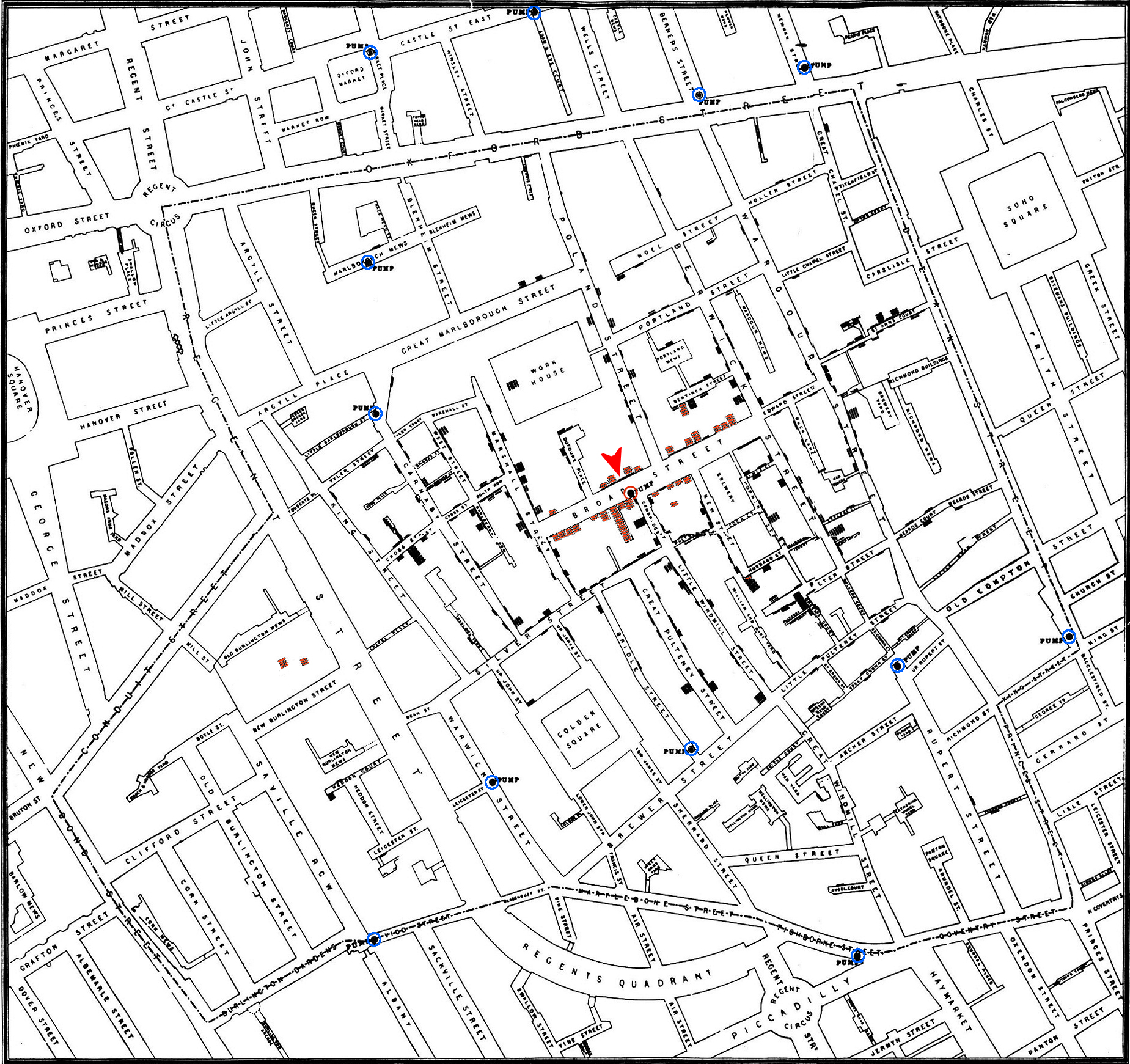Well
into the 19th century, the germ theory of disease
first promulgated in modern form more than 300 hundred
years previously by Girolamo
Fracastoro (1476 - 1533) had yet to replace
the miasma
theory, that disease was caused by
environmental factors rather than disease-specific
microorganisms. There were exceptions.
English physician John Snow (1813 - 1858) in an 1849 essay "On the Mode of Communication of Cholera" suggested that cholera was spread by fecal-oral transmission of "some material" that established itself in the small intestines. In the 1855 edition, he suggested that this "matter" was a cell.
Having rejected effluvia and the poisoning of the blood in the first instance, and being led to the conclusion that the disease is something that acts directly on the alimentary canal, the excretions of the sick at once suggest themselves as containing some material which being accidentally swallowed might attach itself to the mucous membrane of the small intestines, and there multiply itself by appropriation of surrounding matter, in virtue of molecular changes going on within it, or capable of going on, as soon as it is placed in congenial circumstances. — John Snow (1849)
For the morbid matter of cholera having the property of reproducing its own kind, must necessarily have some sort of structure, most likely that of a cell. It is no objection to this view that the structure of the cholera poison cannot be recognized by the microscope, for the matter of smallpox and of chancre can only be recognized by their effects, and not by their physical properties. — John Snow (1855)
Snow's 1849 essay recommended that water be "filtered and boiled before it is used". This is equivalent to the modern "boil-water advisory," and is the first practical application of germ theory to public health. His 1855 edition documented his investigation of the effect of a contaminated water supply to the 1854 London "Broad Street" cholera epidemic.

Snow identified the source of the outbreak as
a public water pump [red circle] on
Broad Street in the Soho district. In a foundational study of
the science of epidemiology, Snow
showed statistically by means of a dot map of houses
with sick people that cholera cases [red
& black bars] were clustered
around the pump. Other public pumps [blue
circles] to the north and south were free
of cholera clusters. Subsequent investigation
showed that the well had been dug only a few feet from a cesspit
(an indoor outhouse) that had begun to leak fecal
bacteria from a baby's diapers. He persuaded the local
council to disable the pump by the simple device of
removing its handle.
After the worst of the epidemic had passed, government officials replaced the handle.
Despite Snow's evidence, government responded only to
the immediate threat, and afterward rejected both Snow's
theory and the public health measures it would have
necessitated. Snow also showed that
the local waterworks company obtained water directly
from the Thames and distributed it untreated to local
homes.